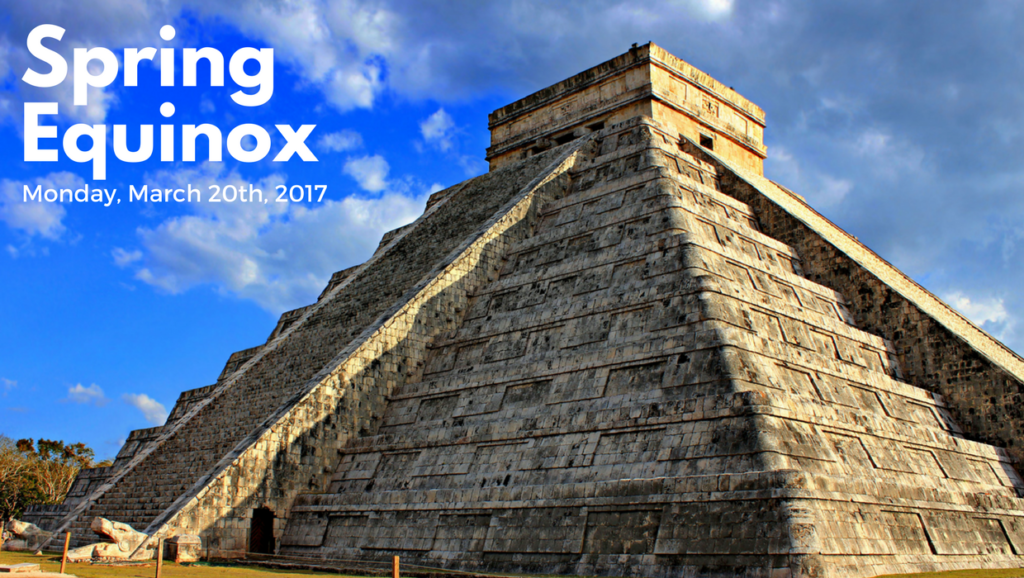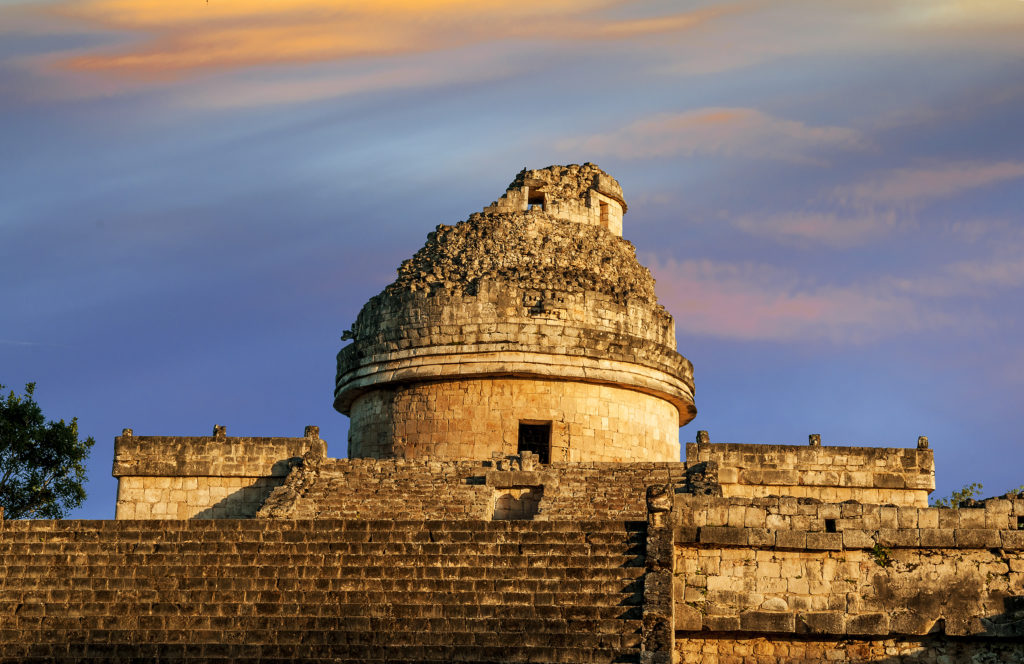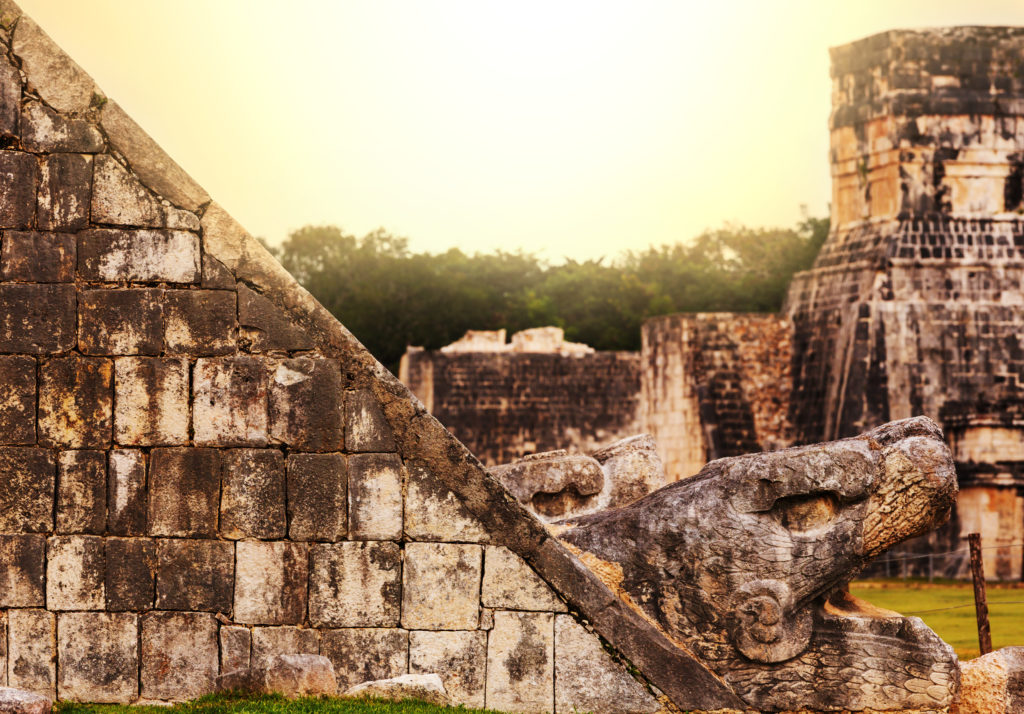
Of the entire year, there are only two days in which there are equal amounts of daylight and darkness. Once each spring and autumn, the sun aligns with the Earth’s equator, the only times when it will rise and set precisely due east or due west.
In an age of electricity and machines, we aren’t as tied to the seasons as we used to be. But for most early civilizations, this time marked a vital transition into the growing season. This year, the spring equinox will occur on March 20, heralding the beginning of spring in the Northern Hemisphere and marking a traditional time for celebration.
And few holidays were more important to the Mayans than the spring and fall equinoxes.
Every year, thousands of pilgrims travel to the great temple at Chichén Itzá to observe the descent of Kukulcán. During the equinox, the pyramid reveals the form of a blazing serpent on the railing of the main staircase, representing the descent of the god Kukulcán in snake form.
The Mayan pyramid is such an achievement in science and engineering that it has been named one of the New Seven Wonders of the Modern World.
The History of Chichén Itzá
 The Caracol observatory at Chichen Itza
The Caracol observatory at Chichen Itza
While Chichén Itzá, on the Yucatan Peninsula, is certainly the most famous Mayan site, the civilization covered a great expanse that included a great portion of Mexico, Belize, Guatemala, El Salvador, and Honduras.
An ancient Mayan book, the Chilam Balam de Chumayel, tells the story of the Itzás inhabiting the site in 964 AD, where it was the most important city on the peninsula for more than 200 years before being abandoned.
“Chichén Itzá” refers to the “mouth of the well of the Itzás” or “mouth of the well of the dew”, as it is covered with dew year round. There is no running water near the site, however limestone sinkholes served as wells.
Hundreds of structural remains still exist, though only a few dozen have been properly excavated. These include the famous pok-a-tok ball courts, the Group of the Thousand Columns, the Caracol, the Temple of the Warriors, and the Temple of the Jaguar. But of all the impressive structures standing at Chichén Itzá, the one that dominates the landscape is the Pyramid of Kukulcán.
The Pyramid of Kukulcán, also referred to as “El Castillo”, stands 32 meters tall, with each side measuring 55.5 meters. The step-pyramid has nine levels with a staircase on each face. Each level represents a stage of the underworld, and the rest of the structure could be said to serve as a physical calendar. The total of the four staircases reveals 364 steps, with a final (365th) step shared by all at the top level.
The outside is one of the most recognizable images in the world, but what’s on the inside?
The great pyramid actually houses an older, smaller pyramid inside of it. The inner pyramid is dedicated to the moon, while the outer is dedicated to the sun, with an inner staircase connecting the two. Innermost is a jade-studded jaguar throne and a sacrificial altar. A disc formerly rested on the seat, which used shells laid out in the form of four rattlesnakes.
As we will see during the equinox, the rattlesnake was a sacred animal to the Maya. Their civilization held a very complex understanding of astronomy, lunar, and solar cycles. Every year the snake sheds its skin, serving as a symbol of the Mayan god Kukulcán, for whom the site is dedicated.
In honor of Kukulcán, a great effort was made in designing the site so that during the equinox the plumed serpent can be seen descending the steps of the pyramid. In the spring, the northern side will be engulfed in shadow while the west receives full light. As you can see, the steps of the pyramid form seven triangles on the staircase, and as the sun falls the snake form slowly moves toward the ground.A New Wonder

El Castillo will stand as a testament to the ingenuity of the Mayan civilization. Modern builders look at such majestic structures with awe, built with such magnitude and precision by a people that lacked access to machines, steel, or even the wheel.
While for most of us today, the equinox may be an event that simply marks the first official day of spring, for ancient cultures they meant much more.
%Mr. Roofing San Francisco’s residential & commercial roofing experts
Tags
Subscribe to Mr. Roofing's Blog







Comments